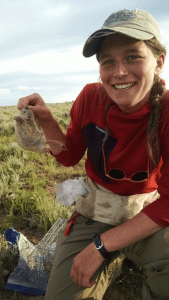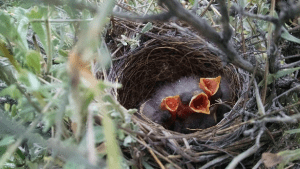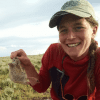The Plight of the Sagebrush Songbirds: A Limerick
By Lindsey Sanders, 2016 Graduate Student Scholarship Recipient
Out in the vast sagebrush sea
There’s a curious problem you’ll see
On the natural gas fields
The Jonah and the Pinedale
The songbirds are struggling, all three.

Brewer’s sparrows so small and so drab
Sagebrush sparrows with their grey hooded cap
They live in the sage
During their breeding stage
And sage thrashers eat all they can grab
First the songbirds start building their nest
Out of sagebrush and horse hair at best
But the fruits of their labor
Will not be there to savor
As they’ll likely lose all they invest
For these birds do have reason to sigh
As nest predation is rather high
Neither nestling nor egg
Makes it out of the nest
Once they fall in a predator’s sights
But who could these predators be?
Coyotes or raptors or banshees?
Using cameras on the nest
We learned mice were the guests
To be blamed for nest contents deceased.
It turns out the mice were quite abundant
And most certainly were not recumbent
Particularly near development
The mice were in their element
And their densities approached the hundreds.
So what led to this increase in plundering?
It certainly has us all wondering
So we’re asking this question
With hopes for answers this session
And with luck there will be no more blundering.
Are apex predators near development declining?
Or are food resources allowing for this climbing?
Or maybe mice are just stuck in the crowd
And can’t find a way out
Of a development matrix, so confining.
We’ve got many hypotheses to test
With these methods we’ll soon find the best
To figure out why
Songbirds are just getting by
Near development here in the west.
 Lindsey Sanders is a master’s student at the University of Wyoming in the Wyoming Cooperative Fish & Wildlife Research Unit. She studies predator-prey dynamics on natural gas fields in western Wyoming, and how human disturbance affects sagebrush-obligate songbirds.
Lindsey Sanders is a master’s student at the University of Wyoming in the Wyoming Cooperative Fish & Wildlife Research Unit. She studies predator-prey dynamics on natural gas fields in western Wyoming, and how human disturbance affects sagebrush-obligate songbirds.


